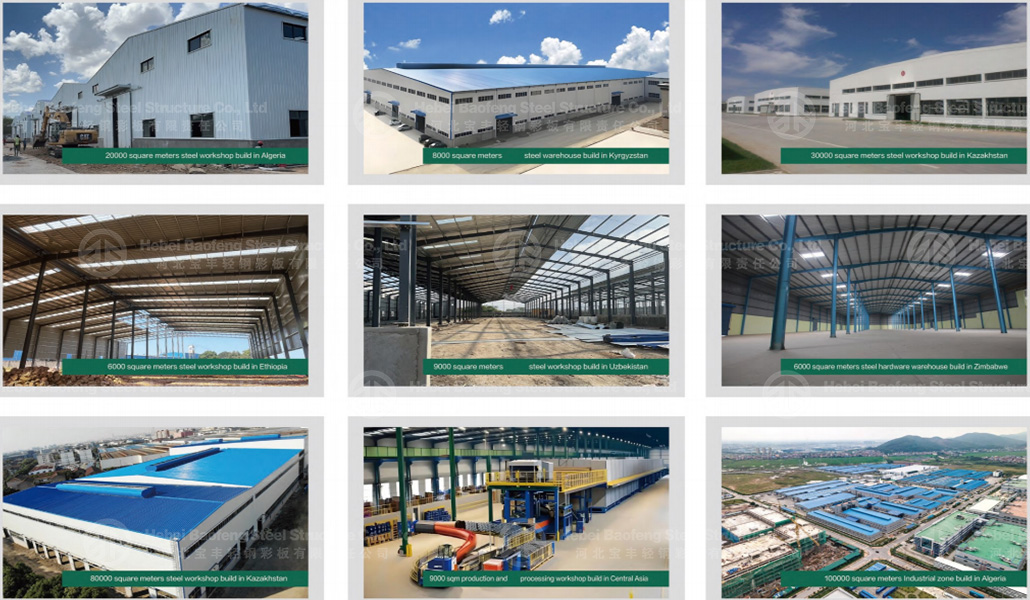
Why Choose Industrial Steel Structure Buildings for Manufacturing?
Key Advantages of Steel Structures for Manufacturing:
1. Speed of Construction
Prefabrication: The components (beams, columns, trusses) are manufactured off-site in a controlled factory environment. This allows for precise engineering and simultaneous site preparation (grading, foundations).
Rapid Assembly: Once delivered, the pre-engineered steel components are bolted together on-site like a giant kit. This process is significantly faster than traditional concrete and masonry construction, meaning you can start production months sooner.
2. Cost-Effectiveness
Lower Initial Cost: Steel structures are generally more economical per square meter than traditional building methods. The efficiency of design and prefabrication reduces material waste and labor costs.
Foundation Savings: Steel buildings are lighter than concrete structures, often requiring less extensive and therefore less expensive foundations.
Reduced Insurance Premiums: Due to their high resistance to fire, earthquakes, and pests (like termites), many insurance companies offer lower premiums for steel-built industrial facilities.
3. Design Flexibility and Large, Clear-Span Interiors
This is a critical advantage for manufacturing. Steel's high strength-to-weight ratio allows for long spans without internal support columns.
Benefit: This creates vast, unobstructed floor space. You can easily configure and reconfigure production lines, accommodate large machinery, and optimize material flow without columns getting in the way. This flexibility is essential for adapting to future process changes.
4. Durability and Low Maintenance
Strength: Steel structures can withstand heavy loads, such as overhead cranes, multi-ton machinery, and multi-story mezzanines for storage or office space.
Weather Resistance: Properly designed and coated steel buildings are highly resistant to harsh weather conditions, including heavy snow loads, high winds, and seismic activity.
Corrosion Resistance: Modern galvanized and painted finishes protect against rust and corrosion, ensuring a long lifespan with minimal maintenance.
5. Energy Efficiency
Cool Roof Systems: Steel roofs can be fitted with reflective coatings that significantly reduce heat absorption, lowering cooling costs in summer.
Excellent Insulation: The building design easily accommodates high-performance insulation systems in the walls and roof, creating a more consistent indoor temperature and reducing energy costs for heating and ventilation.
Natural Light: It is easy to incorporate long-span skylights and clerestory windows, reducing the need for artificial lighting during the day.
6. Sustainability and Environmental Benefits
Recyclable Content: Steel is the most recycled material in the world. Modern steel structures are typically made from a high percentage of recycled scrap metal.
100% Recyclable: At the end of the building's life, the entire steel frame can be recycled again, with no waste sent to landfills.
Reduced Waste: The precision of pre-engineered components leads to very little on-site construction waste.
7. Future Expansion
Easily Modifiable: Expanding a steel structure is relatively straightforward. Additional bays can be added to the length or width of the building with minimal disruption to existing operations. Vertical expansion (adding a second level) is also a feasible option with proper engineering.
Conclusion
For a manufacturing business, time is money, and operational efficiency is paramount. Industrial steel structure buildings provide a faster, more cost-effective, and highly adaptable solution that directly supports the core needs of modern production.
They enable you to get your facility operational quicker, minimize long-term maintenance costs, and provide the flexible, column-free space necessary to optimize your manufacturing layout both today and for future growth. This makes them the superior choice for virtually all types of manufacturing facilities.

Categories
latest blog
Tags